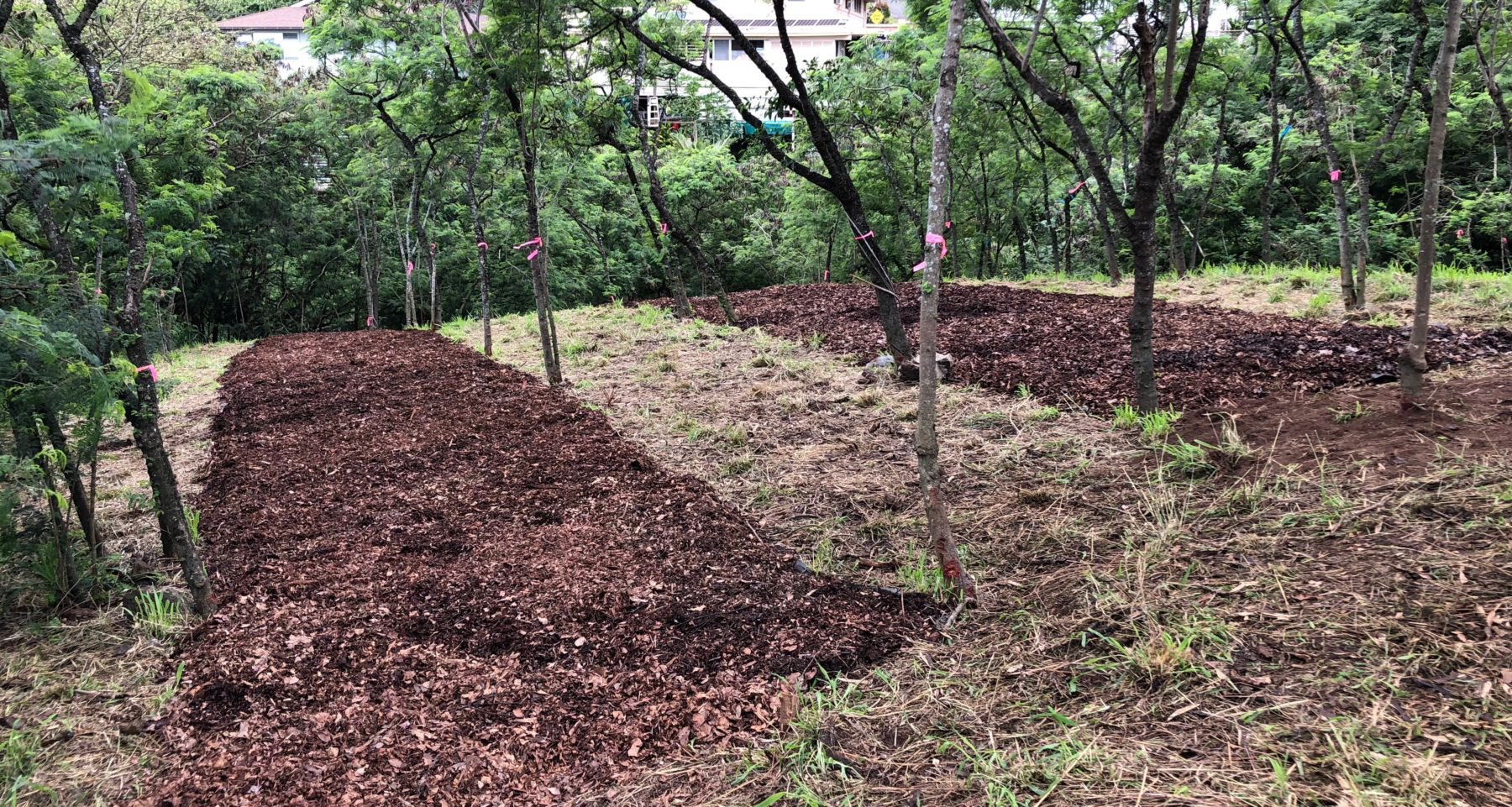Overview
Increasing efficacy in water usage and recharge at Ala Mahamoe, O’ahu, through native plant restoration and the establishment of Hawaiian Cultural Garden. The objectives of the Ala Mahamoe Restoration Projects are three-fold:
- Control invasive species in the project area to improve the integrity and ecological services of the watershed through increased recharge capacity
- Provide opportunities for students and community members to be involved in forest stewardship and conservation work through a green infrastructure project; and
- Perpetuate native Hawaiian cultural practices through the establishment of a Hawaiian cultural garden.
Quick Facts
Project Location:
Ko'olau Mountains , 21.45, -157.89999999999998
Geographic Region:
Pacific Ocean
Country or Territory:
United States of America
Biome:
Tropical Forest
Ecosystem:
Montane Grasslands & Shrublands
Project Lead:
Ko'olau Mountains Watershed Partnership
Organization Type:
NGO / Nonprofit Organization
Project Partners:
State of Hawai'i Division of Land and Natural Resources (DLNR)
Honolulu Board of Water Supply (HBWS)
Pacific Cooperative Studies Unit
Location
Project Stage:
Implementation
Start Date:
2018-01
End Date:
2021-01
Primary Causes of Degradation
Agriculture & Livestock, Fire & Weather Events, Fragmentation, Invasive Species (native or non-native pests, pathogens or plants), Urbanization, Transportation & IndustryDegradation Description
The forests in the mauka regions of the Central Ko’olau Mountains comprise some of the most important watersheds on the island of O’ahu. These watersheds rely on the presence of native plant species to efficiently capture and hold onto precipitation to consistently replenish underground aquifers with fresh water. This is true in both wet and dryland forest ecosystems, where traits of native plant species have evolved to suit their climatic conditions and efficiently retain the water. The forest in the mid to lower mauka sections have been degraded by agricultural practices and urban development. This projects seeks to restore 5.1 acres. This area is currently dominated by habitat-modifying weeds. It is suspected that this area was used for cattle ranching due to its flat ground. Our goal is to restore this area to a more native-dominated system to increase recharge capacity in this high priority watershed area.
Defining the Reference Ecosystem
The reference ecosystem is based on diverse sources of information (e.g. multiple extant reference sites, field indicators, historical records, predictive data).Project Goals
- Control invasive species in the project area to improve the integrity and ecological services of the watershed through increased recharge capacity
- Provide opportunities for students and community members to be involved in forest stewardship and conservation work through green infrastructure project; and
- Perpetuate native Hawaiian cultural practices through the establishment of a Hawaiian cultural garden.
Monitoring
The project does not have a monitoring plan.
Activities were undertaken to address any socio-economic aspects of the project:
2551 waimano home road
#202
Ecological Outcomes Achieved
Socio-Economic & Community Outcomes Achieved
Primary Contact
Name:
alison crowley
Affiliation:
Field Crew Supervisor
City:
pearl city
State:
Hawaii


